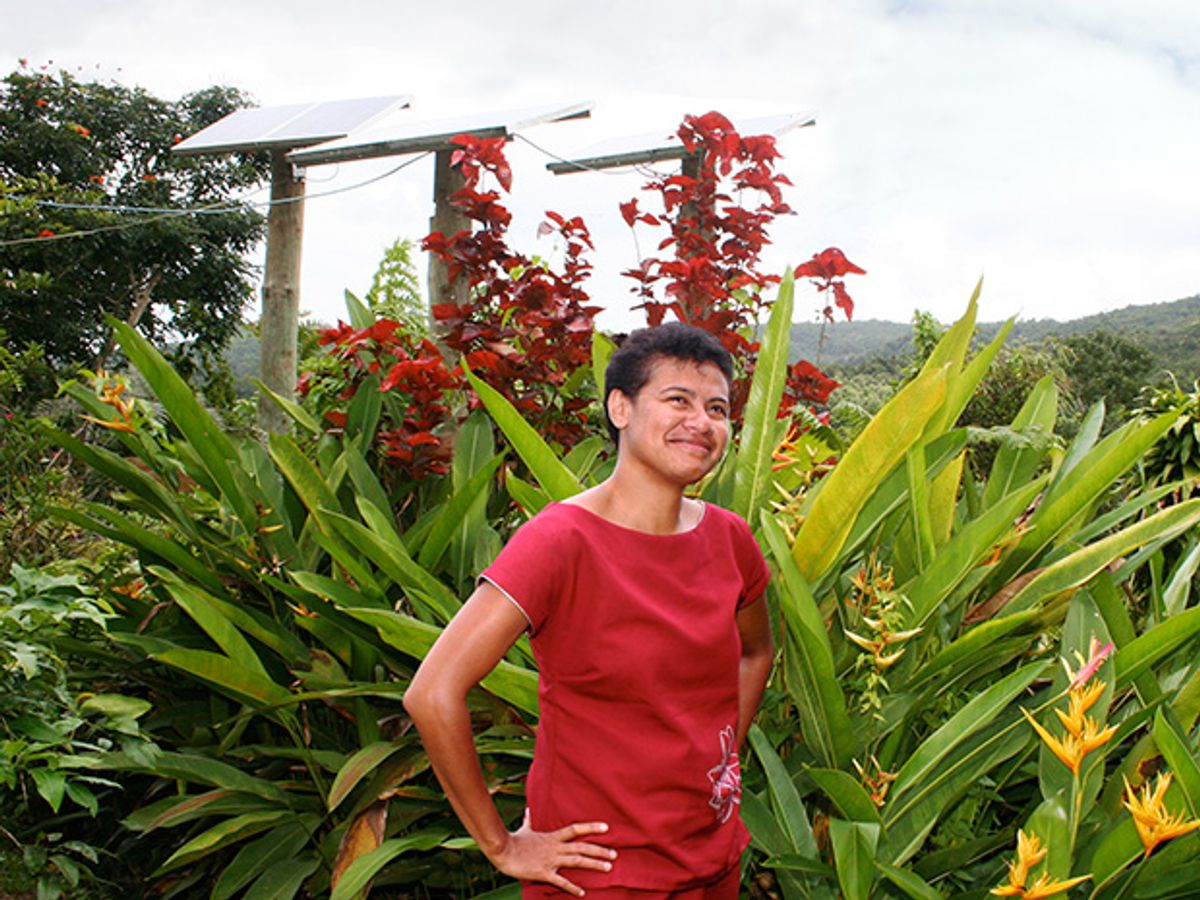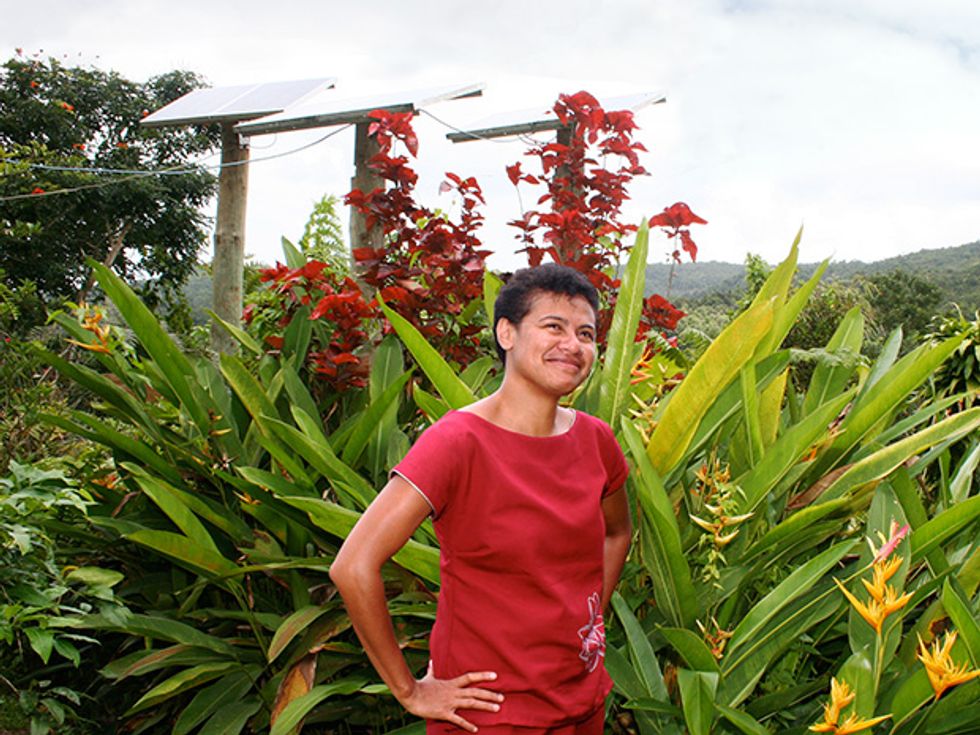Arieta Gonelevu: Bright Lights, Little Islands
She brings electricity to remote islands in the South Pacific

This profile is part of IEEE Spectrum’s Special Report on Dream Jobs 2009.

Arieta Gonelevu’s latest challenge is to light up the only school on the South Pacific island of Tongariki using solar power. It won’t be easy. Tongariki, which is home to about 500 people in five villages, doesn’t have roads or airports. Even cargo boats don’t stop at this island in the Vanuatu archipelago, about 1800 kilometers off the coast of Australia.
It’s just the kind of assignment Gonelevu likes: a nice, old-fashioned engineering challenge—how to provide power in a robust and cost-effective way—that will also have a huge impact on people’s lives. “The happiest, most satisfying thing about my work is that what I do makes a difference,” she says.
She figures that a 100-watt solar panel will let Tongariki’s students take night classes and also let the school do double duty as a community center, where women could gather at night to do their weaving. A hundred watts is a paltry amount of electricity—a decent blender uses six or seven times as much—but it makes a big difference in the jungle, Gonelevu says.
In a typical rural community in the South Pacific, a cluster of 50 houses uses about 25 to 30 kilowatts of power and consumes around 235 liters of diesel a week, which powers a generator for about 3 hours a day. Her mission is to increase the villagers’ access to renewable energy and reduce their use of fossil fuels. Ultimately, she’d like to connect the homes to solar-panel arrays and microhydroelectric stations and encourage the villagers to produce their own biofuel from coconut oil.
Gonelevu, in a pinstriped pantsuit and fuzzy red scarf, holds forth from her corner of the bright, wood-paneled office she shares with eight colleagues at the Pacific Islands Applied Geoscience Commission, in Fiji’s capital of Suva. In the trees by her window, a cluster of mynahs emit startling squawks, but the native Fijian barely seems to notice. The commission’s offices sit on wooden planks around an open courtyard filled with lush, broad-leaved plants. Built into the side of a hill, away from the road and the sputtering of the city’s ubiquitous taxis, the complex feels like a big tree house.
Gonelevu, 33, has spent the last eight years implementing renewable energy systems in remote communities all over the Pacific. But she talks like a veteran power engineer who has been in the business for decades. In a way, she has. Her father, Viliame Gonelevu, is one of Fiji’s first electrical engineers. Back in the 1960s, he had answered the call of the local government to study electrical engineering. The newly formed Fiji Electricity Authority needed qualified people to oversee the country’s first public power plant, which began modestly with a 65-kW diesel generator.
When Gonelevu was 7 years old, her father took the family to see Fiji’s first hydroelectric dam being built. The youngster was amazed by the roar of the water pounding over the dam. “It was like a huge waterfall coming down: Everything was so big,” she says. “The engineers were installing these huge turbines, and I was told the water was going to fall through them, and it was going to make electricity.” The crew showed her the flowcharts for the 80-megawatt facility, and the seeming simplicity of it piqued her curiosity. After finishing high school in 1992, she attended the University of the South Pacific, where she majored in electrical and electronics engineering.
Upon graduating, she taught math and computer science briefly before getting a job as an energy analyst at Fiji’s department of energy. The job title suggests someone who spends her days poring over industry reports and statistics, but Gonelevu mostly found herself out in the field, bringing solar power to rural huts and communal buildings that had never had electricity at all. She quickly discovered that the biggest obstacles were cultural rather than technical. In many remote villages, being a woman doing what she calls “a man’s job” caused tensions.
“When we visit a Pacific rural community, I don’t always get acknowledged. At first, I’d get pissed off,” she says. But then she came up with a different approach. At the feasts that villagers prepare to welcome the energy team, she now sits at the back of the room and retrieves her food only after all the men do, just like the other women. “I’ve learned to go with the flow. I let someone else tell the community, ‘Oh, in fact, she’s in charge,’” she says.
After six years, during which Gonelevu worked on most of the 110 inhabited islands of Fiji, she took time off in 2005 to earn a master’s degree in renewable energy from Murdoch University, in Perth, Australia. Soon after, she moved to her current post, and her job now spans the South Pacific. “I’m in the office one week and out the next. One day it’s a solar project in Vanuatu, the next it’s drafting energy policy in Kiribati,” Gonelevu says.
She freely admits she’d much rather be figuring out how to bring electricity to a jungle village than sitting in a conference room debating big-picture strategy. Among her projects now is a biofuel plant for Nacamaki Village, on Koro Island in Fiji. Coconut palms cover the island, and so she’s hoping the villagers can learn to turn coconut oil into fuel. About 100 kilograms of the meaty beige copra from inside a coconut can be milled into 50 liters of coconut oil; if she installs an oil mill that produces 50 liters per hour, the villagers can quickly produce more than enough fuel for a week. Any leftover oil could be turned into soap, she adds, which the villagers could learn to make and sell.
But before she can teach others, she, too, must learn how to make a good coconut-diesel blend, as pure as possible and with the performance of regular diesel. “Getting the blending right, the type of catalyst, and producing the right type of biodiesel: Those are the major things I am still trying to get my head around,” says Gonelevu. Once she does, she’ll be ready to take on Nacamaki Village—and so much more.
To Probe Further
For more articles and special features, go to Dream Jobs 2009.